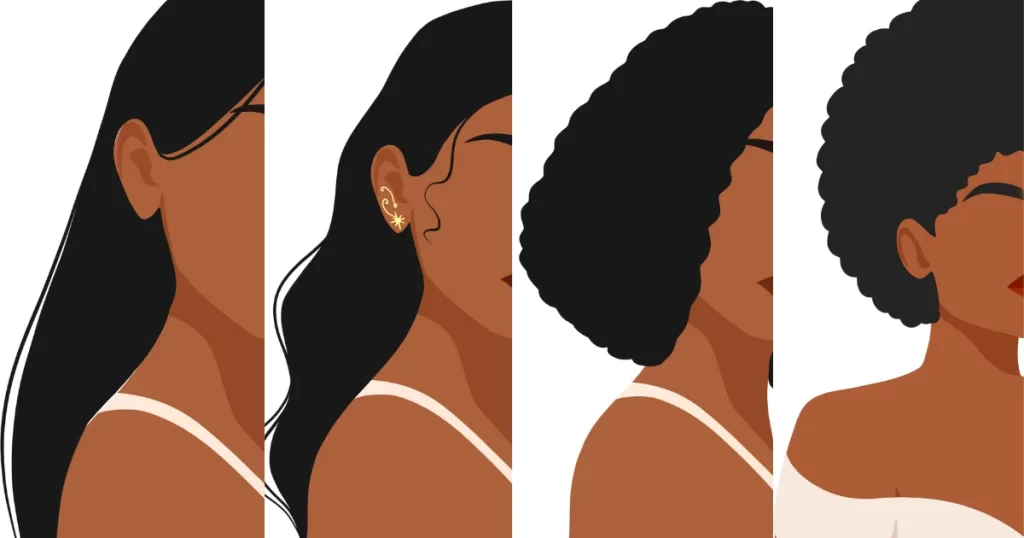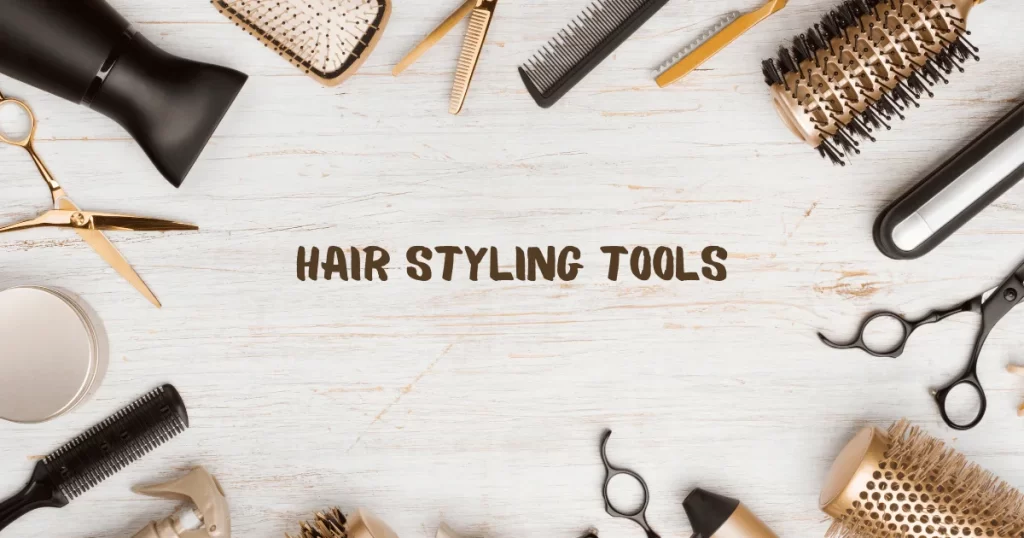Discovering your perfect hair care routine is like navigating a bustling beach, particularly with a multitude of hair types similar to yours. Achieving beautiful, healthy locks can be quite the journey, especially when customizing your unique hair care routine. But fear not, I have unveiled friendly tips to help you attain your hair goals.
Crafting Your Ideal Hair Care Routine.
When building your hair care routine, consider your hair type, specific concerns, and available time. Tailor it to your unique needs, keeping in mind that daily washing isn’t necessary for all hair types. This Includes daily detangling, a gentle microfiber towel, and a satin pillowcase for reduced breakage and time-saving in the morning. Experiment with different techniques and products until you find what works best for your fabulous hair. It’s all about making it work for you!
Hair Type
Knowing your hair type is your secret weapon for choosing the right products and styles to keep your hair in top shape. Whether your locks are oily, dry, normal, fine or thick there are fantastic ways to enhance your natural texture.
Your Natural Hair Type and Pattern:
- Straight Hair: Usually lacks natural curls or waves and appears sleek and shiny.
- Wavy Hair: Has gentle S-shaped waves and may be prone to frizz.
- Curly Hair: Forms distinct curls, from loose to tight curls.
- Coily Hair: Tightly coiled with a natural zigzag pattern, often called “kinky” or “afro-textured.”
Consider Pre-Pooing for Beautiful Hair
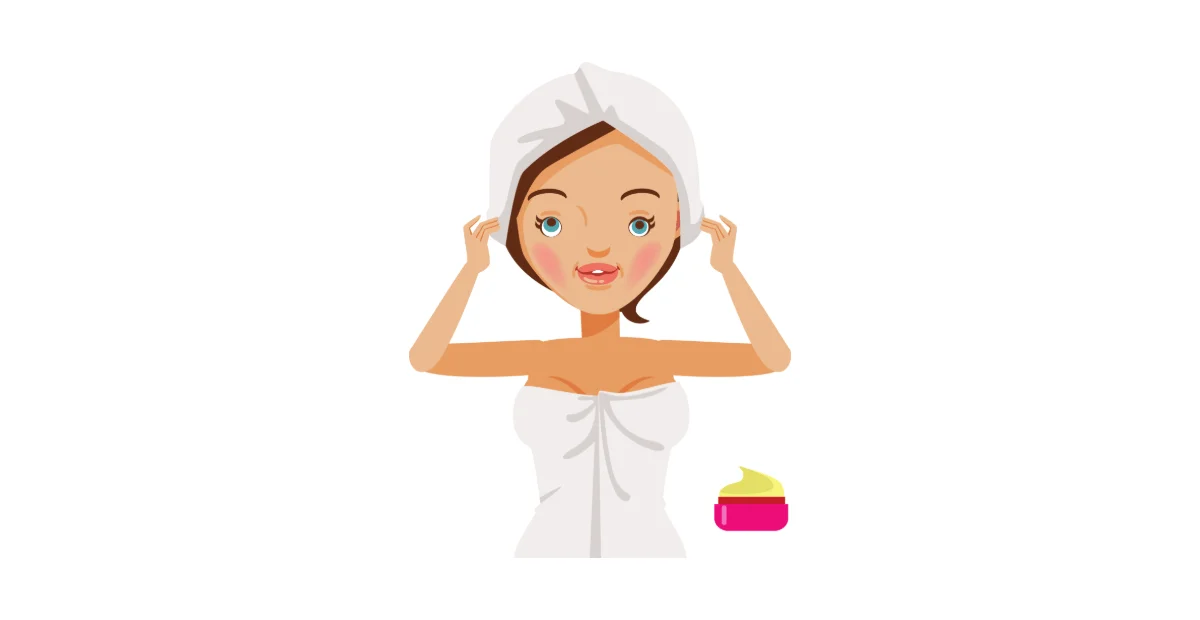
Pre-pooing, a popular technique, involves applying a hair treatment before shampooing.
This step is crucial because shampooing can strip hair of moisture, and restoring this moisture loss can be challenging even with post-shampoo conditioning.
While pre-pooing is often associated with curly and kinky hair types, it can benefit all hair types. It’s a simple and time-efficient process that can be done before shampooing and conditioning.
- The Benefits of Pre-Shampooing:
- Adds extra moisture to dry locks.
- Enhances hair’s softness and vibrancy.
- Simplifies the detangling process.
- Amplifies the effectiveness of conditioner, leading to stronger hair and reduced breakage.
Mastering the Art of Hair Washing
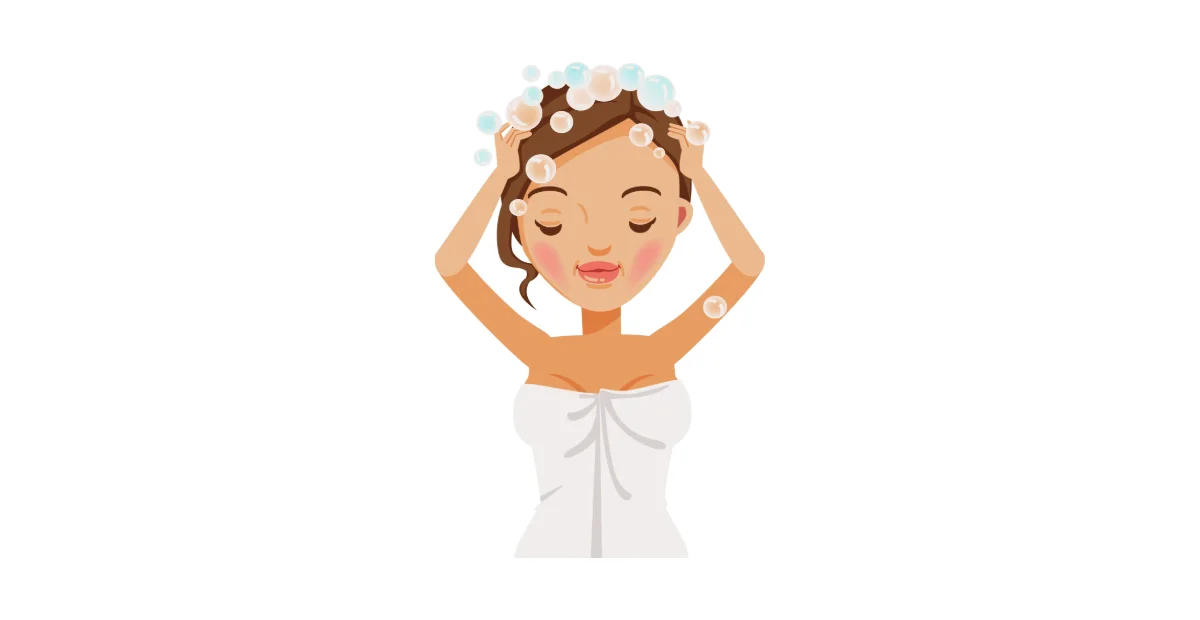
Maintaining fresh and fabulous locks can be like solving a puzzle. Some people wash daily, dealing with oily roots and a busy life, while others can go days or weeks between washes.
The Secret to a Successfully Unveiled Wash Routine:
Start by establishing a consistent wash day routine.
Use a sulphate-free shampoo, as traditional shampoos can be harsh, leading to product buildup and potential damage.
Choose a sulphate-free shampoo tailored to your specific hair type for a healthier look and feel.
Here’s the inside scoop: Overwashing can strip your hair of its natural oils, resulting in dryness and brittleness. Experts recommend washing your hair every 2-3 days but remember that the ideal frequency varies depending on your unique hair type.
Unveil Hair Washing Frequency Tips:
For dry hair, washing every third day is recommended..
If your hair tends to be more oily, consider washing it every other day. Daily washing may be necessary if it looks excessively oily after just one day.
If your hair type is normal, meaning it’s not extremely dry or oily, a routine of every other day or every three days can work.
Remember, there’s no one-size-fits-all rule for hair washing frequency. Pay attention to your hair and wash it when it feels dirty.
Unveil Additional Tips for a Healthy Wash Routine:
Use lukewarm water to wash your hair during wash days.
Utilize a wide-tooth comb to brush your hair when it’s wet.
To extend the time between washes, experiment with dry shampoo to absorb excess oil.
To give your locks the care they deserve, ensure that your shampoo and conditioner align with your hair’s unique needs.
Avoid synthetic additives like phthalates, sulphates, and fragrances. Some prefer co-washing, using conditioner instead of shampoo, a gentler approach favoured by many.
On the topic of hidden gems, professionals recommend incorporating a clarifying shampoo now and then to clear away residue from your scalp and strands. But, it’s important to strike a balance and avoid excessive use.
The frequency of your washes ties back to your hair type and the extent of product use. If you use a few hair products, you can stretch the time between washes.
However, if your scalp tends to be on the drier side, it’s wise to take a more measured approach to daily washes.
Drying Your Hair the Right Way
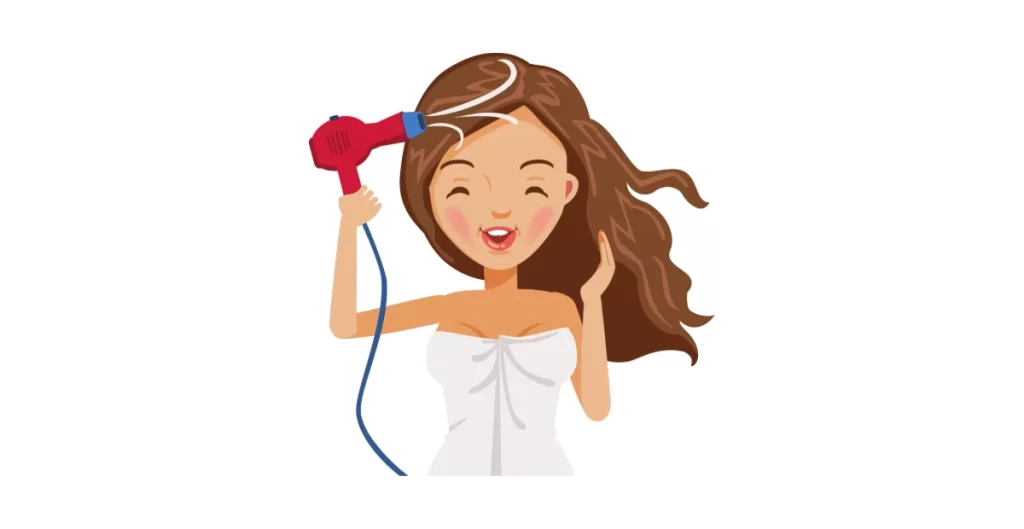
We’ve all been guilty of wrapping our wet hair in a towel turban-style after a shower, but it may not be the wisest choice. Vigorously rubbing your hair with a towel can lead to unwanted friction and even breakage. Ouch!
Here’s a more hair-friendly approach: rather than towel turbans and aggressive rubbing, opt for a gentle squeeze to remove excess water from your hair.
Alternatively, let it air dry naturally, which is quite kind to your locks. If you’d like extra help, consider using a microfiber towel. It’s a softer and more delicate option for your precious hair. The goal is to keep your hair happy and healthy!
Unlocking the Magic of Conditioner
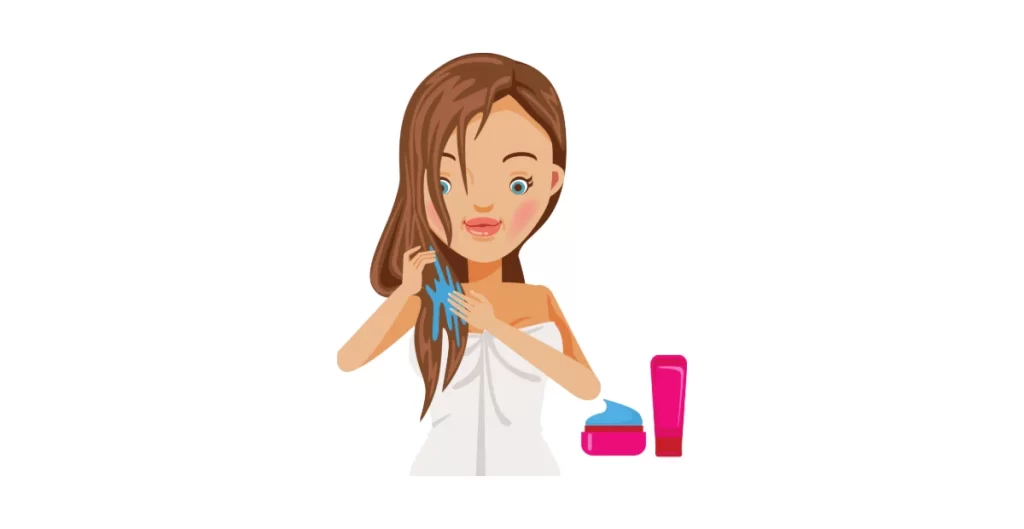
Choosing the perfect conditioner is a big deal in your hair care routine. It’s as essential as cleansing, regardless of your hair type. But the key here is selecting the right conditioner tailored to your unique hair needs.
If your hair type is on the dry, go for conditioners with humectants. They’re like superheroes that dive deep into your hair shaft, providing intense moisture and locking it in.
If your hair has been through the wringer and is damaged, look for a repairing conditioner. These often contain ingredients with silk proteins, which work their magic to revive your hair’s health.
But that’s not all don’t forget the leave-in conditioner, a total game-changer in your hair care routine. It’s like a buddy that sticks with you throughout the day, keeping your hair hydrated and protected.
Leave-in conditioners add that extra layer of moisture, making your hair easier to style and manage. Plus, they’re excellent at warding off breakage and those pesky split ends, especially if your hair is dry or damaged.
Now, when you’re picking out a leave-in conditioner, remember to choose one that matches your hair type and needs. Some are specially designed for particular hair types or concerns, like frizz or colour-treated hair. For the best results, always take a quick look at the product label it’s your guide to having fantastic hair days!
Mastering the Art of Detangling

Detangling your hair may be a daunting task but it’s not as daunting as it seems. The secret is to take it slow and gentle. Here are some friendly tips on how to detangle your hair without causing any harm:
Unveil the Art of Gentle Detangling:
Hair State Matters: Wet hair is a bit fragile, so it’s usually best to detangle when it’s dry. However, for those with coily or kinky hair, starting with wet hair might be easier to manage.
Grab the Right Tools: A wide-tooth comb or a detangling brush is your best friend for this job. They’re designed to move through your hair smoothly, without causing tangles or painful pulling.
Divide and Conquer: Split your hair into sections; it makes the detangling process a whole lot easier to handle.
Add a Little Help: Applying a detangling spray or conditioner can be a game-changer. It softens your hair and makes it a breeze to comb through.
Bottoms Up: Begin at the ends of your hair and work your way up. Slowly comb through any tangles you encounter, treating them with care.
Patience is Key: There’s no need to rush or yank your way through knots. Take your time and be gentle; your hair will thank you for it.
Just remember, that detangling is a crucial part of your hair care routine. With the right tools and these techniques, you’ll keep your hair happy and healthy, free from breakage and full of life.
Unveiling the Art of Styling and Hair Protection
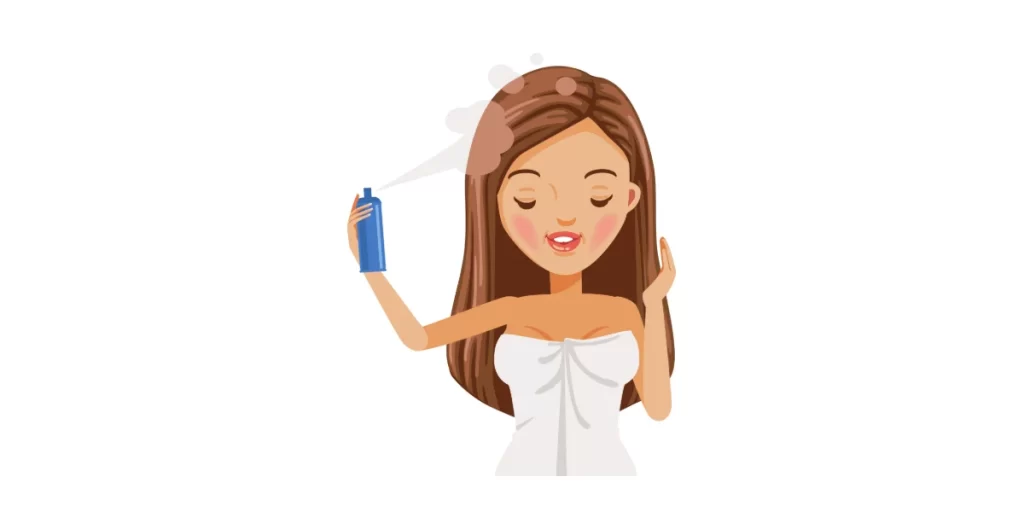
Dry Shampoo:
Combat greasy hair quickly, sparing you from daily washing, but use it in moderation to prevent buildup.
Mousse: Modern mousse isn’t just a throwback; it boosts texture, and volume, and enhances curls, leaving no sticky residue behind.
Hair Wax: Achieve a stronghold and glossy shine with hair wax, all while maintaining hair’s natural flexibility.
Hair Gel: Styling gel offers a range of hold options, imparting noticeable texture and shine to your hair.
Hair Spray: Contemporary hair sprays are available in various strengths, tackling issues like frizz while maintaining hair’s flexibility.
Volumizer: For flat hair, volumizers lift your locks, lending a thicker and lighter appearance.
Heat Protection: Shield your hair from heat damage when using styling tools with the help of heat protection sprays.
Hair Treatments to Consider
When it comes to hair treatments, there are several options to consider, depending on your specific hair type and concerns. Here are some popular hair treatments to explore:
Deep Conditioning Masks treatments are essential for adding moisture and repairing damaged hair. Look for masks with ingredients like shea butter, argan oil, or keratin for extra nourishment.
Protein Treatments are ideal for strengthening and repairing damaged hair. They help rebuild the hair’s structure and are especially beneficial for chemically treated or overly processed hair.
Hot Oil Treatments are excellent for hydrating and revitalizing dry, brittle hair. You can use various natural oils such as coconut, olive, or jojoba for these treatments.
Scalp Treatments, If you have issues with dandruff, itchiness, or an oily scalp, consider using scalp treatments with active ingredients like salicylic acid or tea tree oil to address these concerns.
Keratin Treatments are fantastic for reducing frizz and making hair more manageable. They work by infusing keratin, a protein naturally found in hair, into the strands.
Color-protecting Treatments, If you dye your hair, look for treatments specifically designed to preserve and enhance the vibrancy of your color. These treatments help prevent fading and maintain the integrity of your hair.
DIY Home Remedies: Natural home remedies like aloe vera, egg masks, and yogurt can be used for various hair issues. For example, aloe vera can soothe a dry scalp, while egg masks provide protein to strengthen hair.
Hair serums are lightweight, leave-in products that add shine and reduce frizz. They can also protect your hair from environmental damage.
In conclusion
Embracing your unique hair type and specific needs is crucial for a well-crafted hair care routine. It’s not just about maintaining healthy and beautiful locks, but also about understanding and nurturing your hair. Whether you have curly, straight, dry, or oily hair, it is essential to work with your hair, not against it.
A successful hair care routine is a journey of self-discovery, experimentation, and learning what makes your hair thrive. So, with a little extra care, you can keep your locks looking fabulous and feeling healthy. Remember to embrace your hair’s natural beauty and enjoy the journey of self-care. Happy hair care!


